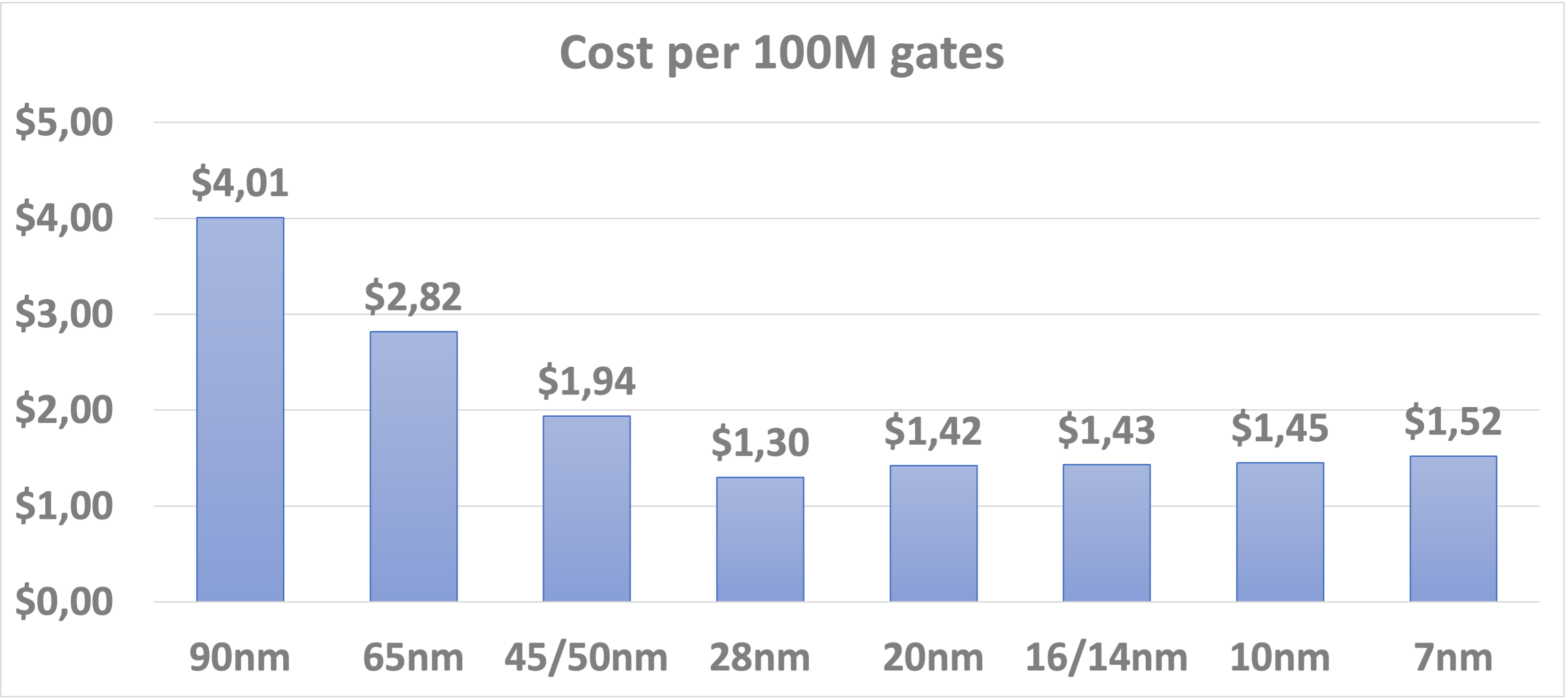Cost of transistors¶
The cost per transistor may not be the ideal number to compare chip process generations as chips are actually paid per wafer. And the cost per useful transistor on a wafer will also depend on the die size, how tolerant individual chips on the wafer are to defects, and the defect rate. It is however an easy number to work with.
The following graph is based on numbers found in a report of the Marvell Technology Inc 2020 Investor Day. (Marvell Technology Inc is a fabless semiconductor company.)

For a long time the cost per gate (or for that reason, transistor) decreased rapidly with each new process generation. In fact, the cost per wafer did not increase much while the gate density doubled with each new process generation. This ended with the 28nm generation, From the 20nm generation on (which TSMC launched in 2014) the cost per gate did not longer decrease. Instead, the price per wafer grew faster with every new generation than the transistor density increased. This is also the moment that gates on a chip could no longer be made as flat 2D structures, but 3D structures were needed instead to control leakage, requiring more and more process steps as the miniaturisation further progressed.
Nowadays processors and computers still become faster with every generation though not at as fast a rate as before (see the breakdown of Dennard scaling), but the cost starts to rise again. It is no coincidence that every new generation of high-end graphics cards or almost every new generation of high-end smartphones is more expensive than the previous one. The cost of high end processors for servers and supercomputers is also exploding the last couple of years. And the price per flop is hardly going down anymore. The only way this can still improve is by architectural innovations that make processors more efficient so that more work can be done per transistor.
This also implies that we cannot expect a drastic growth in supercomputer performance in the near future without a matching growth of budgets.
It also implies that the only way to get more research results on supercomputers without growth in funding is paying more attention to the quality of the software that is used and the way the supercomputer is used.